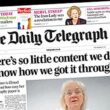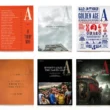Radio has always confused media futurologists and defied the sceptics. The sound-only medium survived the conquest of TV and the ipod, and has managed to bounce back from recession and technological revolution, with audiences and advertising more or less intact. In the 1990s, just as radio audiences were starting to sag under the weight of MTV and multi-channel mayhem, urban traffic congestion put a zip into in-car listening which often accounts for 60% or more of radio audiences. But the recently churning ownership of commercial radio signals a less certain future: some 50% of radio listening in the US, UK and Australia has changed hands during the past few years with many longterm investors bailing out.
It is easy to see why.
FM/AM radio looks pretty constrained and “flat” in a world of social networks and mobile internet. But the expensive (almost compulsory) switch to digital will expose the broadcasters to competition for which they may be ill-equipped. Radio stations are, after all, media businesses that don’t even own their content. And their listeners have plenty of other ways to hear the same music.
But, even while online advertising has ripped out profits from newspaper and magazine publishers, radio has so far seemed to defy the odds and (mostly) maintain its hold on listeners and advertising. US radio (now heavily in private equity ownership), is expecting to grow again in this Presidential election and Olympics year and to increase its world-best 11% share of all advertising. In Australia, the year of sports is boosting audiences, and advertising share is holding steady at 8%. Even in the UK, where they have to contend with the powerful no-advertising BBC, commercial radio stations are expecting modest growth in revenues and in their 4% share of all advertising. As if to emphasise the eternal contradictions, radio was the fastest growing media sector in China in 2011, registering a 28% jump in advertising revenues.
The radio industry is full of the wonders of digital in a year when (finally) a decent proportion of new cars across Europe will have DAB radio fitted as standard. Digital radio can give broadcasters the opportunity to transmit (and collect) data for specific customers, provide weather, traffic and even shopping offers: radio can become truly interactive for the first time and perhaps in video too. The UK, which had once hoped to be able to switch most radio broadcasting over to digital by 2013 (thus freeing up valuable FM spectrum for internet services), is talking up DAB. And the industry-wide adoption of the nifty “RadioPlayer” app has boosted radio listening on the internet to a record 42m hours weekly. UK radio listening is now 29% digital – via digital radio, internet, cable/satellite TV and, increasingly, by mobile phone. And rival broadcasters, who have vainly tried to stop the Irish-owned Global Radio from snaffling a dominant 50%+ share of all UK commercial stations, are positively purring about this year’s increases in listening, with growth across the board. Too soon…
If you look at what is happening in the US, you might conclude that UK radio is operating in a fool’s paradise, under-aware of what is ahead. The missile is… music streaming. In the US, weekly usage of internet radio (much of it from pure-play music streamers) jumped by 30% which means that 29% of all 12+ Americans are now non-broadcast, internet music listeners. Mobile phone listening to radio increased three-fold in 2011. And ‘internet radio’ advertising revenues are now equivalent to 40% of those for broadcast radio.
Much of that surge in US music listening comes from the growth of music streaming by ‘personalised radio’ stations. Streaming services like Pandora, Rhapsody, Rdio and, more recently, Spotify offer music listening tailored to a listener’s specific requirements, genre, artist or even mood. On the market leading Pandora, a ‘station’ is created by a listener specifying an artist or song or multiple items of any kind. Listeners can tune into pre-made genre stations and can also respond with a ‘thumbs up’ or ‘thumbs down’ to any or all music tracks as they are played. These are stations that “learn” how to keep individual listeners satisfied. California-based Pandora is the brainchild of Stanford politics graduate and sometime music producer Tim Westergren whom Time magazine described as “one of the 100 most influential people in the world” but he hasn’t really started yet.
The heart of Pandora is a database of 400 specifications for each song, which is then linked to listeners’ preferences to suggest other songs with similar characteristics. Subscribers pay a monthly subscription for unlimited music streaming or the service can be free – with advertising. Although most music streamers are still loss-making, Pandora may soon be profitable. During May, it recorded 1.1bn listener hours – an increase of almost 87% year-on-year. It now has 53.3m active listeners – 52% up on 2011. It claims some 70% of ‘online radio’, whose key player Sirius XM is now planning to launch into ‘personalised radio’. More important, Pandora’s May 2012 share of total US radio listening (broadcast and streaming) is now 6% – almost double that in 2011. Crucially, it claims to be the largest “radio” network for 18-49 year olds. Advertisers have started the stampede: ad revenue was up 6% in the first quarter of 2012. With $138m revenue and a $1.8m loss in 2011, Pandora is on course for profits this year and, perhaps also a return to the company’s $3bn IPO valuation in 2011.
In the country where radio is the soundtrack of legendary ‘road trips’, FM/AM broadcasters are on the rack even though they are discovering the web too. Pundits predict that “by 2020, broadcasting will be a term that will be foreign to anyone under 40”. These internet radio/ streamers each have distinctive and sometimes confusing ways of attacking the burgeoning US market for online/ mobile music. But the revenue model tends to include paid subscriptions, advertisements directed at non-subscribers, and music sales on behalf of labels and retail partners. Whether you call this internet radio, ‘personalised radio’, online music service, or even cloud-based music, it is not traditional radio – and don’t the broadcasters know it.
It is obvious why Spotify wanted to conquer America. With some $900m of revenues (and still loss making), the now London-based company was founded six years ago in Sweden where streaming now accounts for 89% of all music sales. It is the world leader among streamers – outside the US – and claims to be the second largest music ‘retailer’ after iTunes. Across the world, it has some 10m listeners up to 3m of whom are paying subscribers. It is determined to make it in the US. But, one year in, Spotify (which bought Napster and linked up with Yahoo in 2011) is not having an easy time.
Last week marked the first anniversary of Spotify’s much-hyped invasion of America. It had taken two years of negotiations with labels to reach the world’s largest music market – which shows how sceptical the companies so recently were of an ‘industry’ that now looks like their salvation. But although music industry and US listeners alike have been warming to streaming services, Spotify has yet to achieve a transatlantic breakthrough. Despite this, gutsy investors have pumped in another $200m (to add to their initial $100m launch budget) which would give the Anglo-Swedish streamer a valuation of up to $4bn, despite likely worldwide losses of $100m in 2012.
There are no signs it will get easier for Spotify, with increasingly fierce competition – and price cutting all round. You can only imagine how relieved are the former record companies to find themselves in the brave new world of music streaming, anticipating the sale/rental/ subscription trend now emerging (courtesy of Amazon et al) in video, magazines and books. Just a few years after digitalisation and music-sharing piracy slashed profits and prospects, recorded music is bouncing back.
And the resurgence is becoming a worldwide phenomenon. This month, Pandora (which had flirted with international expansion earlier in its life) launched into no-recession Australia alongside at least five other global services and two local ones. They’re all starting to scare Aussie commercial radio broadcasters which have traditionally been able to secure 8-10% of all advertising revenue. The UK is almost certain to be next for Pandora and the streaming boom. These streamers clearly compete with iTunes, music retailers – and also with radio broadcasters. Expected music streaming launches this year variously from Apple, Amazon, and Google, will turbo-charge the sector and might just wake UK radio from its slumbers.
In the country where streaming still only accounts for only 4.5% of music sales, UK broadcasters are abuzz with the promise of digital broadcasting and rising sales of DAB radios. The dominant BBC has promised “the first truly digital Olympic Games” featuring 24 simultaneous channels across all broadcast, web and mobile platforms; and “Live ReStart” to ensure viewers don’t miss a second of any event anytime. After the Olympics, comes the State broadcaster’s “RadioTAG”. This digital radio prototype features: “live pause”; the ability to Tweet a track to a friend on your mobile who can listen to the song and then (if they want) buy it; and listen to a MacDonalds ad while getting a discount coupon (in the form of a QR code) sent to your phone.
Separately, the BBC boffins are developing RadioVis which will come with ‘sidebar’ signalling of images and text messages for broadcast audio services. Admittedly, that all sounds a bit like an extension of the jokey webcam use by today’s sound broadcasters. Radio executives (just like print publishers before them) simply love the idea that digitalisation can bring them into the lucrative world of moving pictures, just as their seemingly endless number of radio-branded music TV channels find themselves fleeced by music streamers and YouTube.
The trouble is that radio broadcasters are starting to look just like other legacy media businesses caught in the crossfire of baggage-free, low-cost, new-wave operators. They might also just find themselves squeezed between ‘personalised radio’ from the streamers, who knows how many new web ‘channels’, and television for whom the web will literally open up the world. Commercial radio has always seemed like the cinderella medium especially in those countries (like the UK) where audiences and advertising revenue are constrained by strong state-funded channels.
It is only 40 years since the launch of the UK’s first legal commercial stations after stormy, romantic years of radio piracy from Radio Caroline and Kiss FM on ships and in bedsits. Ownership has become heavily consolidated (ex the BBC) by Global and magazines giant Bauer. Just as radio pushes on into digital, the regulators (like the UK’s Ofcom) are looking forward to auctioning the vacated FM radio spectrum for smartphones and TV. Ironically, those resulting powerful interactive services (where TV melts into the internet) might just leave national broadcast commercial radio for dead in the jungle of the web.
Digital broadcast radio may become a smaller, predominantly localised, and (frequently) social network-linked medium. But there’s going to be a lot more music, exactly as you want it.
Have you signed up? http://flashesandflames.com Media Fortune, Fame & Folly




My main problem with Spotify is the enforced tie-in with Facebook. Until that ends I will not use it.